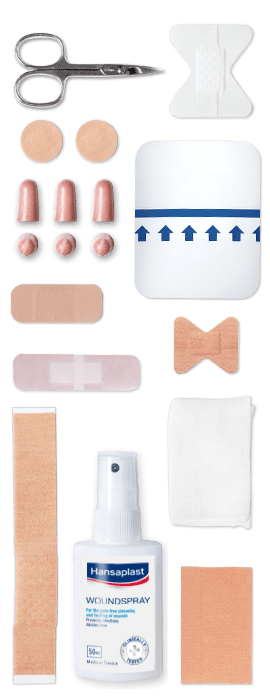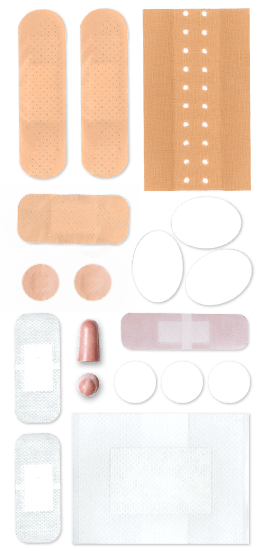Accidents happen to the best of us. Though we cannot always prevent them, we can prepare for them. And there is no better way to be prepared than to have a well-stocked first-aid kit in your home. This is especially relevant for those who live with kids or senior citizens. Kids tend to get injured often and having an organized medicine cabinet will help you tend to their wounds in a timely manner. Moreover, you will feel a confident sense of security knowing that you have all the necessary medical tools in place in case an emergency arises.
How to organise and maintain your Medicine Cabinet

1. Store at the right place
A disorganized medicine kit is an inconvenience that you don’t want to deal with at a crucial moment. Always store your medication collectively, in a safe but easily accessible place. Don’t forget to put anything you use back in the right place when you’re done. Ensure that the location of the medicine kit is known to everybody in the household. If you live with toddlers or young children, be careful to keep the medicine kit out of their reach, in a cool, dry place.
2. Check for expiration dates and age specifications
Run a check on all the items in your medicine kit every 6 months. Carefully check the expiration date on every package. Discard anything that has crossed its expiry date. This applies not only to your medicine but also to wound plasters or bandages. Most people aren’t aware of the fact that items such as wound plasters and crepe bandages have expiry dates too. Instead of throwing these in the garbage, check if your local pharmacy has a safe disposal system set in place for unused medical items.
Additionally, always check for age specifications on medication bought for your children. As these medicines change as they grow older, you will need to upgrade and stock up as necessary.

3. Make sure you have the right bandages and products for first aid
Statistics show that most accidents happen in the household itself. This makes having a dedicated medicine cabinet at home all the more important. Make sure to have all the basic products to help you treat common injuries such as cuts, twists or sprains. For example, essentials like crepe bandages, wound plasters and cotton gauze should always be at hand.
4. Assemble a ‘to-go-set’
Having a separate first-aid kit for when you’re on the go makes travelling safer. Try to compile a compact selection of products that can easily be carried in your sports bag in case something goes wrong during a workout, hiking or other outdoor or sports activities. You can switch up your selection of items based on where you are going and potential scenarios to prepare for.
5. List down emergency numbers
This is a crucial step that doesn’t occur to most people. Always note down important emergency phone numbers and hotlines to keep along with your first aid kit. Keep a note of doctors, hospitals or pharmacies around you as well. This way, the necessary information will be easily accessible to anybody in your family if the need arises.
Medicine Cabinet Checklist
Here’s a list of crucial items you need in your first aid kit to be prepared for every situation. Check your supplies regularly every six months to replace and restock as needed.
- A thermometer
- Wound plasters in various sizes for general care
- Fixation Tape to dress wounds like deeper cuts or grazes
- Crepe Bandages for sprains and injuries
- A selection of painkillers and medicine for headaches and fevers
- Cold medicine (decongestants, cough medicine, throat lozenges)
- Antidiarrheal treatment
- Tweezers and scissors
- Fever medication
- Sterile gloves
Disclaimer
Please note that the above recommendations are general care tips. Consult a health care professional in case of any uncertainty around wound treatment and healing.Always see your doctor if a wound is deep, bleeding profusely or shows signs of infection. For diabetic patients especially, proper wound care holds the utmost importance. Do not hesitate to discuss any concerns you may have with your doctor or your podiatrist, even when it comes to minor wounds and cuts – especially if they’re on your feet.The information provided through this website should not be used to diagnose or treat a health problem or disease. Although compiled with great care, it is not a substitute for professional advice. If you have or suspect a health problem, consult your doctor immediately.For further information regarding Hansaplast products, please contact us via email at customer.care@bdfindia.com.


